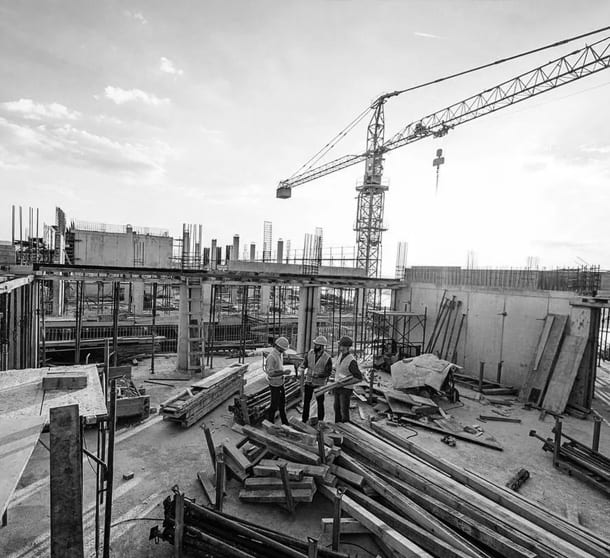Loft Conversions: Step-by-Step Planning and Cost Guide
These attic conversions provide living space and significantly increase the value of your property. Everything from assessing the suitability of your loft for conversion to navigating the tricky terrain of planning permissions and building regulations is explained in the next section.
From loft extensions to attic conversions to an all-inclusive London loft conversion, the prospect is both exciting and daunting. Let us be with you every step of the way, right from determining whether your loft can be converted, the types of loft conversions one can go for, and yet still making sure that the necessity and relevance of building regulations for loft conversions is adhered to. We will also discuss together the financial implications of loft conversions, including how much loft conversions cost and tips for budgeting your project, and practical aspects such as adding a bathroom, ensuring proper heating, insulation, and ventilation, as well as the importance of choosing the right contractor for me for loft conversions. With such an experience in this area, it will not be that hard to plan a loft conversion, and you will make your choices with a lot of confidence, knowing they are according to your vision and within your budget.
Can My Loft Be Converted?
Head Height
Converting your loft into a functional space starts with measuring the head height, which is crucial for a comfortable and legal transformation. Ideally, the height from the top of the floor joists to the underside of the ridge beam should be 2.4m to accommodate a new floor and ceiling. Building regulations, however, allow a minimum of 2.2m. If your loft falls short, you might consider lowering the ceilings below or raising the roof, though these options can be expensive and might require planning permission.
Roof Structure
The type of roof structure in your home plays a significant role in the ease and cost of a loft conversion. Traditional cut roofs, typical in houses built before the 1960s, are generally easier to convert due to their straightforward design. On the other hand, trussed roofs, common in homes from the late 1960s onwards, and purlin roofs may need more complex and costly modifications. You can identify your roof type with a quick look in your loft.
Existing Conversions in Neighborhood
Looking at existing loft conversions in your neighbourhood can offer valuable insights into what’s possible for your home. If many neighbours have successfully converted their lofts, it’s a good sign your property might be suitable too. At Force Builders Ltd, we suggest talking to neighbours who have gone through the process to learn about potential challenges and solutions, especially with shared structures like chimneys or party walls.
Potential Obstacles
Several obstacles can impact the feasibility of your loft conversion. For example, a water tank or chimney stack in the loft space might need to be moved or removed, which can increase the project’s cost and complexity. Additionally, you must ensure there is enough space for a staircase that meets building regulations. If space is limited, regulations allow for some flexibility in headroom over the stairs, but this might limit your design options.
In summary, assessing the potential for a loft conversion involves carefully considering factors such as head height, roof structure, existing neighbourhood conversions, and potential obstacles. Consulting with professionals like us at Force Builders Ltd can help you navigate these considerations, ensuring a successful loft conversion that enhances both your living space and property value.
Types of Loft Conversions
Dormer Loft Conversion
A dormer loft conversion extends vertically from a sloping roof, creating more floor space and headroom. This versatile option fits various property styles, making it a popular choice. Dormer conversions provide ample space and headroom, perfect for adding bedrooms, bathrooms, or a home office. They also allow for larger windows, bringing in plenty of natural light and transforming the loft into a bright, airy area. However, they may require planning permission and tend to be more expensive due to the structural work involved.
Mansard Loft Conversion
Mansard loft conversions involve altering the roof structure to create nearly vertical walls at a 72-degree angle, topped with a flat roof. This approach effectively adds another floor to your home, significantly boosting property value. Mansard conversions provide generous living space, making the new room feel like a natural extension of your home rather than an attic. They offer design flexibility, including options for windows or balconies, which bring in natural light and offer great views. However, the extensive structural changes can make these conversions more costly.
Roof Light Loft Conversion
Roof light conversions are the simplest and most cost-effective way to transform a loft. They work within the existing roofline without extending the space externally. This type is perfect for adding natural light and ventilation to your loft without major structural changes. Roof light conversions can be up to 25% cheaper than mansard or dormer options, making them the most economical choice. However, they offer less space and are constrained by the existing loft structure.
Hip to Gable Loft Conversion
Hip-to-gable loft conversions involve converting an inwardly slanted end roof into a vertical wall, turning a hip roof into a gable one. This change adds extra floor space and creates more room in the staircase area. Ideal for end-of-terrace and detached homes, hip-to-gable conversions can be combined with a rear dormer loft for maximum space. While often done under permitted development rights, it’s advisable to apply for a lawful development certificate to ensure compliance.
Planning Permission and Building Regulations
Navigating planning permission and building regulations is crucial in the loft conversion process. At Force Builders Ltd, we understand the complexities and are here to guide you every step of the way. Let’s explore when planning permission is necessary and the key building regulations to ensure a smooth loft conversion project.t.
When Planning Permission is Needed
For those living in listed buildings, obtaining Listed Building Consent is essential, and planning permission is typically required for homes in designated areas like Conservation Areas, Areas of Outstanding Natural Beauty, or National Parks. In England, loft conversions generally don’t require planning permission if they meet specific conditions, such as not exceeding 40m3 of space for terraced houses or 50m3 for detached and semi-detached houses. This includes any previous roof extensions within this allowance. The conversion should not extend beyond the existing roof slope facing the highway or be higher than the highest part of the existing roof. Extensions must avoid raised platforms or balconies and match the original roofing materials closely. Side windows need to have obscured glazing and be 1.7 meters above the floor, among other conditions.
Building Regulations to Consider
Regardless of planning permission, loft conversions always require building regulations approval. This ensures the structural strength of the new floor, the stability of the structure, safe escape routes from fire, well-designed stairs to the new floor, and effective sound insulation between the conversion and the rooms below. New windows must be large enough for escape in case of fire, with openings at least 450mm x 450mm and 0.33m2 in area. If adding a third storey, a protected stair enclosure leading to an exterior exit door is necessary. Fire regulations require new floor joists to offer at least 30 minutes of fire protection, which may involve replastering ceilings in the rooms below. A fire door must separate the loft room, and existing doors on the stairway to the ground and first floor need to provide 20 minutes of fire resistance. Mains-powered smoke alarms must be installed on each floor and interconnected to activate simultaneously.
New floor joists are typically needed to support the weight of the new room, necessitating a structural engineer’s assessment. Sound insulation, support for existing or new roof structures, and compliance with building regulations for plumbing, electrics, and bathroom ventilation are also crucial. Electrical work must conform to Part P of the building regulations and the 17th Edition Electrical Regulations. Insulation requirements can be met through either cold-roof or warm-roof insulation methods.
Understanding and adhering to these requirements is essential for a successful loft conversion. At Force Builders Ltd, we are dedicated to ensuring your project meets these standards and exceeds your expectations, transforming your loft into a valuable addition to your home.
Cost of Loft Conversions
Understanding the cost of loft conversions is essential for homeowners aiming to expand their living space. At Force Builders Ltd, we are dedicated to providing clear and comprehensive information to help you budget effectively for your project. Let’s explore the factors that influence costs and the average expenses for different types of loft conversions.
Factors Affecting Costs
Several factors can significantly impact the overall cost of a loft conversion. The size of your loft and the type of conversion you choose are critical. For example, larger lofts and more complex conversions like mansard or hip-to-gable require more materials and labor, increasing the cost. The existing roof structure also plays a crucial role, as certain types may require more substantial modifications. Additionally, the style and quality of finishes you select can affect the price, with higher quality materials leading to higher costs. The duration of the project and your location in the UK can further influence the final price, with metropolitan areas generally costing more due to higher labor rates.
Labor costs are another significant aspect, accounting for 40-45% of the total expense. The complexity of the work, the addition of features such as en-suites, and the property’s size can all increase labor costs. Specific elements like the number of windows, plumbing requirements, and the addition of internal walls can also contribute to the overall cost.
By understanding these factors, you can better prepare and budget for your loft conversion project. At Force Builders Ltd, we are committed to ensuring your project not only meets but exceeds your expectations, transforming your loft into a valuable and functional addition to your home.
Average Costs for Different Types
To give you a clearer picture, let’s break down the average costs for different types of loft conversions. On average, loft conversions cost between £2,000 and £4,000 per square meter, with gable end conversions being towards the higher end due to the extensive roof work required.
For a more detailed breakdown:
- Velux loft conversions typically range from £15,000 to £25,000, offering a cost-effective option with minimal structural changes.
- Dormer loft conversions, known for providing ample space and natural light, can cost around £50,000 on average.
- Hip-to-gable loft conversions are priced at about £60,000, suitable for those looking for significant space addition.
- Mansard conversions, while offering substantial living space and flexibility, stand as the priciest option, ranging from £40,000 to £70,000.
Here’s a table summarizing the average costs for different property types undergoing a hip-to-gable conversion:
| Home Type |
Average Cost |
| Average Semi-Detached Home |
£35,000 to £50,000 |
| Large Semi-Detached Home |
£50,000 to £65,000 |
| Average Detached Home |
£40,000 to £55,000 |
| Large Detached Home |
£60,000 to £75,000 |
Additionally, specific costs associated with various supplies and tradespeople can vary:
| Supply/Tradesperson |
Average Cost |
| Electrics |
£500 to £1,000 |
| Structural beams, joists |
£1,500 to £4,000 |
| Insulation |
£5 to £90 per m2 |
| Windows |
£160 to £2,000 per window |
| Internal doors |
£30 to £180 per door |
| Staircase |
£350 to £9,500 |
| Scaffolding |
£131 per m2 |
| Bathroom |
£4,500 to £6,000 |
| Decorating materials |
£800 to £1,600 |
Understanding these costs and factors will help you plan and budget for your loft conversion more effectively. At Force Builders Ltd, we’re here to guide you through every step of your loft conversion project, ensuring a smooth process and a result that exceeds your expectations.
Building and Construction Process
Initial Planning and Design
At Force Builders Ltd, we start every loft conversion project with a comprehensive on-site survey to determine if your loft is suitable for conversion. This initial step is vital as it provides the necessary information to create detailed architectural drawings, including all the structural engineering calculations needed to ensure the build meets current building regulations. Our design consultants will also check if planning permission is required or if the work can be completed under permitted development.
First Fix
The first fix phase involves all major structural work. This includes installing steel beams to meet building control requirements, constructing the suspended structural floor, and building elements like dormers or mansard roofs. We also install Velux windows and ensure the roof is tiled and finished with options like torch-on membrane, GRP, or EDPM finishes. During this phase, scaffolding is erected, and any debris is removed from the site. Our skilled tradespeople coordinate the tasks of integrating the electrical and plumbing frameworks necessary for the second fix.
Second Fix
After the structural work of the first fix, the second fix phase focuses on the finer details and finishes. This includes installing internal elements like hard flooring or carpets, hanging doors, and fitting electrical sockets, light fixtures, and other integrated electrics. Plumbing connections for sinks, baths, and showers are completed, ensuring everything is ready for decoration. The second fix requires meticulous attention to detail to achieve a high-quality finish that meets both aesthetic and functional standards.
At Force Builders Ltd, we are dedicated to guiding you through each stage of the building process, ensuring your loft conversion is carried out smoothly and to your satisfaction. With careful planning and expert execution, we transform your loft into a valuable addition to your home, enhancing both your living space and property value.
Adding a Bathroom in a Loft Conversion
Plumbing Challenges
When adding a bathroom in a loft conversion, the first consideration is the plumbing system. Many older properties have gravity-fed systems, which can complicate installing bathroom fixtures above the water tank level. To address this, you might consider relocating the water tank or installing a negative head shower pump to ensure adequate water flow. Additionally, aligning new plumbing with existing supply and waste pipes can significantly reduce costs and complexity. For example, positioning the new bathroom directly above the existing one can simplify the connections to the current plumbing infrastructure.
Space Utilization
Loft conversions often feature sloped ceilings and limited headroom, challenging the design of a new bathroom. To maximize available space, consider installing skylights or dormer windows to increase headroom in critical areas like the shower. Innovative solutions such as built-in storage in the eaves or recessed shelves within stud walls can effectively use otherwise wasted space. For smaller loft spaces, opting for compact fixtures and carefully considering the layout can prevent the bathroom from feeling cramped.
Fixture Options
Choosing the right fixtures can significantly enhance the functionality and comfort of a loft bathroom. Compact toilets, showers, and sinks specifically designed for small spaces help maintain comfort without sacrificing style. For showers, installing an electric model can be advantageous as it only requires a connection to the cold water supply, simplifying the installation process. If natural light is limited, well-placed LED lighting can create a brighter, more welcoming environment. Additionally, underfloor heating can provide a clean, minimalist look while ensuring the space remains warm and inviting.
By carefully considering these aspects during the planning and execution phases, we at Force Builders Ltd ensure your loft conversion includes a bathroom that is functional and adds value to your home.
Heating, Insulation, and Ventilation
Heating Options
At Force Builders Ltd, we understand the importance of maintaining a comfortable temperature in your loft conversion year-round. Electric radiators are a great heating option as they can be installed without extending existing central heating systems, saving both time and money. These radiators come in various styles and include energy-saving features like programmable timers and WiFi controls, allowing you to manage heating schedules efficiently and remotely. For lofts with lower ceilings, conservatory-style electric radiators are ideal due to their reduced height, fitting neatly into the space.
Insulation Methods
Proper insulation is crucial for energy efficiency and temperature control in your loft conversion. Installing high-performance insulation boards between and over the rafters helps keep the loft warm during winter and cool in summer by reflecting heat away. At Force Builders Ltd, we ensure that all insulation complies with UK building regulations, focusing on maximizing energy efficiency and minimizing heat loss. For those using their loft as a living space, we recommend a combination of glass mineral wool insulation to achieve the government-recommended depth of 270mm, ensuring optimal thermal performance.
Ventilation Strategies
Ventilation is vital for maintaining a healthy living environment by preventing issues like mould and condensation. At Force Builders Ltd, we use a combination of natural and mechanical ventilation methods to maintain air quality and moisture control. This includes installing strategically placed windows and vents to facilitate airflow and using extractor fans in areas prone to higher humidity. Adhering to Building Regulations Part F, we ensure all loft conversions meet the minimum standards for adequate air quality and moisture control, with specific ventilation rates depending on the room’s usage.
To provide comprehensive temperature control and ventilation, integrating Heating, Ventilation, and Air Conditioning (HVAC) systems into the loft conversion can offer a more controlled environment, suitable for both summer and winter months. Additionally, maintaining clear ventilation paths between insulation and roof underlay is essential to prevent interstitial condensation, ensuring that these air paths remain unobstructed to allow free air movement.
By focusing on these key aspects of heating, insulation, and ventilation, we at Force Builders Ltd ensure your loft conversion is not only aesthetically pleasing but also comfortable, energy-efficient, and healthy for all occupants.
Choosing the Right Contractor
Finding Qualified Builders
- Wait for the Best: It’s common to experience wait times when looking for top loft conversion companies in your area. These firms are often in high demand due to their quality of work, making them worth the wait.
- Online Reviews and Ratings: Use platforms like Checkatrade to explore reviews, ratings, and profiles of local loft conversion companies. This resource allows you to see recent work, read detailed reviews, and learn more about the companies from the comfort of your home.
- Personal Recommendations: Asking friends, family, and neighbors for builder recommendations can provide reliable insights. Personal endorsements offer a clear picture of a contractor’s professionalism and quality of service.
- Consult Other Tradespeople: If you’ve had positive experiences with other tradespeople, ask them for recommendations. Professionals within the industry often have connections with equally reliable loft conversion specialists.
- Local Experience Matters: Choosing a contractor with local experience can streamline the entire process. These builders will understand area-specific regulations, supply chains, and other local nuances, which can be crucial for your project’s success.
- Interview and Shortlist: Once you’ve identified potential contractors, arrange face-to-face meetings. These interactions can help you gauge their expertise and determine if their business approach aligns with your expectations.
- Check References: Contacting previous customers of your shortlisted contractors can provide additional reassurance. Ask about their experience with the contractor and whether they would hire them again.
What to Look For in a Contractor
- Professional Credentials: Ensure your contractor is licensed, insured, and ideally a member of recognized trade bodies like the Federation of Master Builders (FMB). This affiliation signals adherence to industry standards and a commitment to quality.
- Experience and Specialization: Look for contractors who specialize in loft conversions and can showcase a portfolio of completed projects. Specialization indicates their capability to handle the specific challenges of loft conversions.
- Transparent Quoting: A trustworthy contractor will provide a detailed and transparent quote outlining all project costs, including materials and labor. This transparency helps in setting realistic budget expectations.
- Effective Communication: Pay attention to the contractor’s communication style. Prompt and clear responses to your inquiries are indicators of a reliable professional.
- Aftercare Services: Opt for contractors who offer aftercare services. This commitment can be crucial for addressing any post-completion issues effectively.
- Site Visits and Assessments: A dedicated contractor will insist on site visits to accurately assess the conversion space and discuss your specific requirements. This step is essential for precise planning and quoting.
- Comprehensive Contracts: Professional contractors will provide a detailed contract outlining the scope of work, timeline, payment schedule, and procedures for any unforeseen changes or challenges during the project.
By meticulously evaluating these factors, we at Force Builders Ltd ensure that you choose a contractor who not only meets but exceeds your loft conversion expectations.
Conclusion
Embarking on a loft conversion journey with Force Builders Ltd marks the start of a transformative experience that not only expands your living space but also significantly enhances your property’s value. Throughout this comprehensive guide, we’ve covered every crucial aspect, from initial considerations and planning permission to selecting the right contractor and completing the construction process. By partnering with Force Builders Ltd, homeowners can navigate these steps with confidence, knowing their project aligns with their vision and budget. Our expertise and commitment to quality ensure your loft conversion is not just an addition, but a valuable enhancement to your home.
As we conclude this guide, it’s clear that undertaking a loft conversion involves many considerations but also offers countless rewards. Force Builders Ltd stands ready to guide you through this process, ensuring the outcome is a beautifully integrated space that meets your needs and exceeds your expectations. The broader implications of choosing Force Builders Ltd for your loft conversion extend beyond immediate aesthetics and functionality; they represent an investment in your property’s future and showcase the potential of your existing space. Embrace the possibility of transformation with Force Builders Ltd and make your loft conversion journey one marked by success, satisfaction, and significant return on investment.
FAQs
How Much Do Design and Structural Plans for a Loft Conversion Cost? Creating design plans for a standard loft conversion typically costs between £3,000 and £6,000. Additionally, you should budget for structural calculations, which may include new beams or other structural changes. These structural design fees can range from £1,800 to £3,600 for a standard project.
What is the Expected Cost Range for Different Types of Loft Conversions? The cost of a loft conversion can vary significantly depending on the type. A dormer loft conversion, which extends out from your existing roof, generally costs between £20,000 and £40,000. A hip-to-gable conversion, which changes the slope of your roof to create more space, is likely to cost between £30,000 and £50,000. The most expensive option, a Mansard conversion that reshapes the entire roof for maximum space, can cost anywhere from £40,000 to £70,000.
Do I Need Planning Permission for a Loft Conversion? Typically, a loft conversion is considered permitted development and does not require planning permission, as long as it adheres to specific limits and conditions. This simplifies the process for many homeowners, but it’s always wise to check the specific regulations in your area.
What are the Key Steps Involved in Converting a Loft?
The process of converting a loft involves several key steps:
- Inspecting the roof space to ensure it’s suitable for conversion.
- Hiring an architect or surveyor to confirm the loft’s suitability and to draft the necessary plans.
- Clearing out the loft and preparing it for the conversion process.
- Evaluating the need for and potentially carrying out rewiring.
- Installing new floor joists to support the structure.
- Insulating the floors for energy efficiency and comfort.
- Laying down the floorboards on the new joists.
- Reinforcing the rafters to support the new construction and ensure safety.




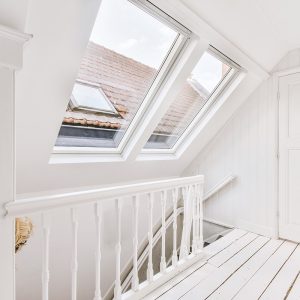

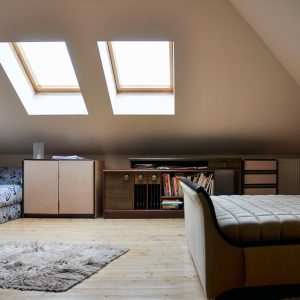
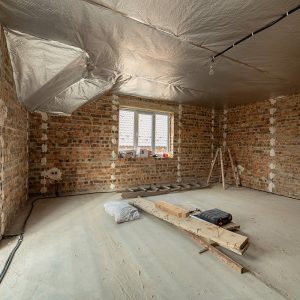



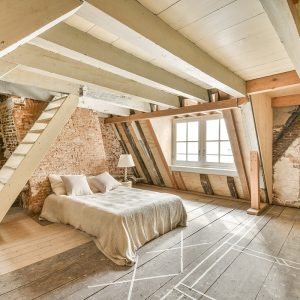
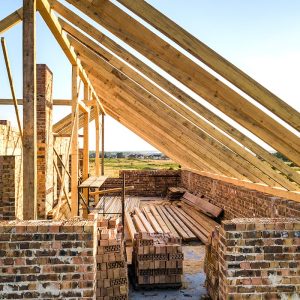





 #
# 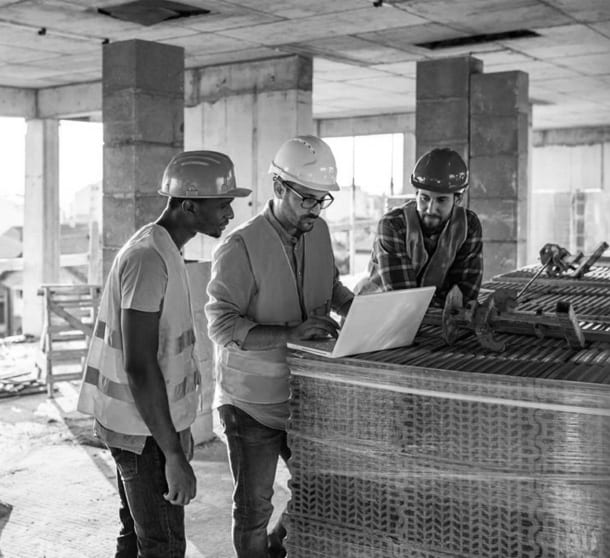 #
# 